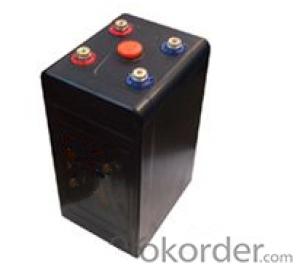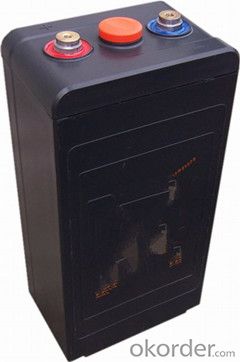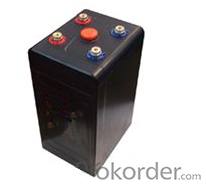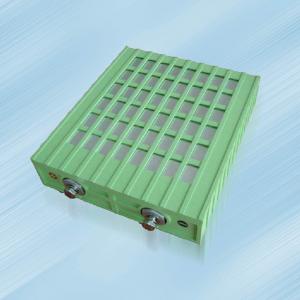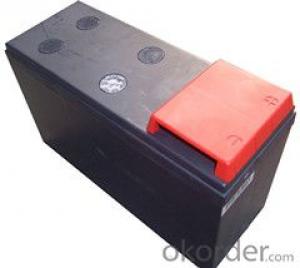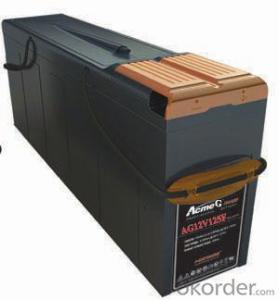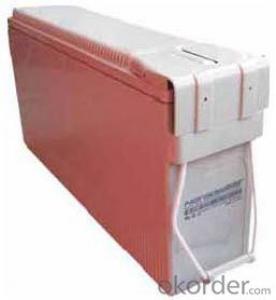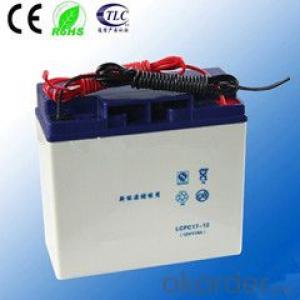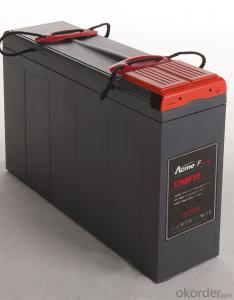battery the EosG series batteries EosG260
- Loading Port:
- Shanghai
- Payment Terms:
- TT OR LC
- Min Order Qty:
- 2000 unit
- Supply Capability:
- 2000000 unit/month
OKorder Service Pledge
OKorder Financial Service
You Might Also Like
Range summary
The EosG range of gel technology batteries offers outstanding performance including a 15+ years design life .
The EosG series batteries is designed based on the Eos series.
Using the polymer gel electrolyte .
Built to the highest standards and compliant with the latest IEC60896-21/22 standard .
This range also offers 100% capacity out-of-the-box and is capable of handling deep discharges for complete peace of mind. The use of flexible connectors and the ability to be installed both horizontally and vertically allows for multiple installation possibilities.
Technical features
Above 15 years designed life
Reliable post sealing structure
Excellent charging acceptant ability
Excellent performance at extreme high and low temperature
Low self-discharge ability
Flexible and convenient installation with slinky outside looking
Type: | EosG260 | |
Voltage: | 2V | |
Nominal Capacity: | 260Ah(C10) | 260Ah(10 hours rate:) |
Length: | 109mm | |
Width: | 184.5mm | |
Height: | 360.5mm | |
Height with termial: | 372mm | |
Weight: | 17.4Kg |
Compliant standards
IEC60896-21/22
BS6290 part 4
Telcordia SR4228
Eurobat guide
UL
Manufactured under system ISO9001(TUV)
EN 50272-2 or local equivalents
Correspondence exchange and transmission system
Mobile communication system
Power plant and power transformer system
Navigation and signaling system
Solar energy system
Radio and broadcasting station
Emergency lighting system
Plate special patent calcium and tin lead alloy and thick plate design
Container ABS(V0 optional)
Separator AGM
Valve EPDR
Electrolyte using the polymer gel electrolyte
Terminal M8 copper core posts
Battery installation compliant with:
Main applications
Products characteristics:
FAQ
![]() What is sulfation of batteries?
What is sulfation of batteries?
Sulfation is the formation or deposit of lead sulfate on the surface and in the pores of the active material of the batteries' lead plates. If the sulfation becomes excessive and forms large crystals on the plates, the battery will not operate efficiently and may not work at all. Common causes of battery sulfation are standing a long time in a discharged condition, operating at excessive temperatures, and prolonged under or over charging.
![]() How long a battery can last?
How long a battery can last?
The service design life of a battery are vary considerably with how it is used, how it is maintained and charged, temperature, and other factors.
![]() Do batteries self-discharge when not in use?
Do batteries self-discharge when not in use?
All batteries, regardless of their chemistry, self-discharge. The rate of self-discharge depends both on the type of battery and the storage temperature the batteries are exposed to. However, for a good estimate, Narada batteries self-discharge approximately 4% per week at 80ĄăF.
- Q: How to repair the battery?
- Pry open the adhesive or heat-sealed battery cover, reveal the maintenance-free battery rubber exhaust valve, carefully remove the exhaust valve, save, observe the battery internal situation. Add 0.1% to 0.5% of the electrolyte to the battery, just to the battery above the flow of electrolyte. At the same time, check whether the black impurities, if there are obvious black turbid impurities, indicating that the battery plate has been significantly softened, the possibility of battery repair is relatively small. If there is no black muddy impurities, need to wait 4 hours later, the water fully into the battery. If it is only because the deactivation time is long and cause the battery capacity to decline, do not need to carry out this step operation, should go directly to step 3 pre-charge.
- Q: How is the capacity of the battery defined?
- 100AH capacity of the battery, fully charged after the 100A current discharge can be an hour to put the power finished. 50A current is 2 hours put away! 20A is 5 hours! Of course this is the theoretical value, in fact it is impossible to have a constant current discharge.
- Q: What is the difference between a maintenance-free battery and a conventional battery?
- Different materials will produce a different phenomenon: the traditional battery in the course of the use of the phenomenon of liquid reduction occurs, because the antimony on the grid will pollute the sponge on the negative plate of pure lead, weakened after the full charge of the battery Electromotive force, resulting in excessive decomposition of water, a large number of oxygen and hydrogen, respectively, from the positive and negative plates to escape, so that the electrolyte reduced. With calcium instead of antimony, you can change the fully charged battery back electromotive force, reduce the overcharge current, liquid gasification rate decreases, thereby reducing the loss of electrolyte.
- Q: What are the technical parameters of the battery?
- The main performance parameters of the battery are the following: model; voltage; battery capacity; battery type, such as lead-acid batteries, alkaline batteries, lithium batteries, solar cells, fuel cells.
- Q: How to determine the battery is good or bad?
- Instrument test: the general use of battery discharge tester, the test instrument two positive and negative clamp were holding the battery positive and negative electrodes, press the test button to observe the test instrument instructions.
- Q: What are the advantages of maintenance-free batteries?
- Maintenance-free battery because of its normal charging voltage, the electrolyte only produce a small amount of gas, so throughout the use of the need for the addition of distilled water, in the normal charging system, do not need to remove the charge from the removal. But in the maintenance of the proportion of its electrolyte should be checked.
- Q: What is the meaning of the battery above 12v65Ah?
- Voltage 12V, current 65AH, that is the capacity of 65A. (A is the unit of current. H is the time unit)
- Q: How should the battery be well maintained?
- Battery Pile The battery pile head is part of the battery connected to the vehicle. If the corrosion or poor connection occurs, the battery will work poorly. The owner can check whether there is a white powder near the pile head, which is the sign of the pile head corrosion. If the white powder is more, you can use boiling water to burn it off, and then its anti-corrosion treatment, in the pile head smear some grease or preservatives can, but should not be too much to apply, so as not to affect the use.
- Q: 80ah how much battery storage capacity?
- The size of the battery storage power refers to the battery capacity. Battery capacity is generally calculated in AH (safety). You 80Ah battery capacity is 80Ah, meaning that if you discharge current to 80A, you can put an hour.
- Q: What is a maintenanceable battery?
- It also has a shock, high temperature, small size, self-discharge characteristics. Life is generally twice the ordinary battery.
Send your message to us
battery the EosG series batteries EosG260
- Loading Port:
- Shanghai
- Payment Terms:
- TT OR LC
- Min Order Qty:
- 2000 unit
- Supply Capability:
- 2000000 unit/month
OKorder Service Pledge
OKorder Financial Service
Similar products
Hot products
Hot Searches
Related keywords

